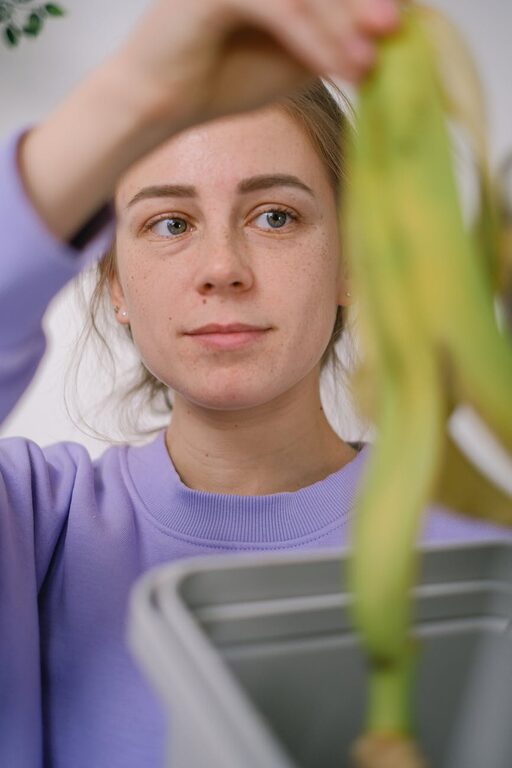
Beginner Tips for Composting at Home: A Simple Guide to Get Started
Composting at home is an excellent way to reduce kitchen and yard waste while enriching your garden soil naturally. If you’re new to composting, it might seem a little intimidating at first, but with some basic guidance, anyone can start turning scraps into valuable compost. This guide will provide beginner-friendly tips to help you set up and maintain a successful compost bin.
Why Compost at Home?
Composting offers numerous benefits beyond just waste reduction:
– Lowers the amount of organic waste sent to landfills
– Reduces methane emissions produced by decomposing waste in landfills
– Creates nutrient-rich compost that improves soil health and plant growth
– Saves money by reducing the need for chemical fertilizers
– Helps retain moisture in soil, conserving water
Whether you have a large backyard or just a small balcony, composting can be adjusted to fit your space and lifestyle.
Choosing the Right Composting Method
There are several types of composting systems suitable for beginners:
1. Traditional Compost Bin
This is a container or enclosed area where you add organic waste. Bins can be purchased or made from wood pallets or wire mesh.
Advantages:
– Controls pests better
– Neat and contained space
2. Compost Pile
Simply create a heap of organic material in an unused corner of your yard.
Advantages:
– No cost for containers
– Easy to turn and add materials
3. Tumbler Composters
These are enclosed bins mounted on a frame that can be rotated.
Advantages:
– Speeds up decomposition with easy turning
– Compact and pest-resistant
4. Vermicomposting (Using Worms)
This method uses red wiggler worms to break down waste in a special bin.
Advantages:
– Excellent for small spaces indoors
– Produces worm castings, a highly nutritious fertilizer
Setting Up Your Compost Bin
Location
Choose a spot that is:
– Easily accessible for adding waste
– Well-drained and with some shade to maintain moisture without overheating
Avoid placing it directly on concrete to allow worms and microbes to access the compost.
Bin Size
Aim for a compost bin at least 3 feet wide by 3 feet tall. This size helps maintain heat and moisture for efficient decomposition.
What to Compost: Green and Brown Materials
Successful composting depends on balancing two types of materials.
Green Materials (Nitrogen-rich)
These are fresh, moist materials like:
– Fruit and vegetable scraps
– Coffee grounds and tea bags
– Grass clippings
– Plant trimmings
Brown Materials (Carbon-rich)
These are dry, fibrous materials such as:
– Dry leaves
– Straw or hay
– Shredded newspaper or cardboard
– Wood chips or sawdust
Important Tips on Materials:
– Avoid adding meat, dairy, oily foods, and pet waste to prevent odors and pests
– Chop or shred large pieces to speed decomposition
– Keep a rough ratio of 2 to 3 parts brown to 1 part green to maintain balance
How to Maintain Your Compost
Turning the Compost
– Turn or mix the compost every 1-2 weeks to introduce oxygen
– Use a garden fork or compost aerator tool
– Proper aeration speeds up decomposition and prevents foul odors
Moisture Level
– Compost should feel like a damp sponge—moist but not soaking wet
– If it’s too dry, add water and green materials
– If too wet, add more brown materials and turn more often
Temperature
– Active compost heats up between 130-160°F (55-70°C), indicating good microbial activity
– A thermometer is optional but helpful to monitor progress
– If compost cools down, turn and add fresh materials
Harvesting and Using Your Compost
After 2-6 months, compost should turn dark brown, crumbly, and smell earthy.
How to Harvest
– Use a screen or sift compost to remove large bits
– Loosen finished compost from the bottom and sides of the bin
Applying Compost
– Mix into garden soil before planting
– Use as mulch around trees and shrubs
– Add to potted plants to enhance growth
Compost improves soil structure, retains moisture, and supplies essential nutrients for healthier plants.
Common Composting Challenges and Solutions
| Challenge | Solution |
|————————|—————————————|
| Foul odor | Add more brown materials and turn |
| Pests (rats, flies) | Use a closed bin, avoid meat/dairy |
| Compost too dry | Add water and green materials |
| Compost too wet | Add brown materials, increase turning |
| Slow decomposition | Chop materials smaller, ensure proper balance and aeration |
Getting Started: Quick Checklist
- Pick a compost method and location
- Gather a mix of green and brown materials
- Begin layering materials in your bin or pile
- Maintain moisture and turn the compost regularly
- Monitor progress and harvest finished compost
—
Composting at home is a rewarding way to reduce waste while nurturing your garden naturally. Start small, be patient, and soon you’ll enjoy the benefits of rich, homemade compost. Happy composting!
